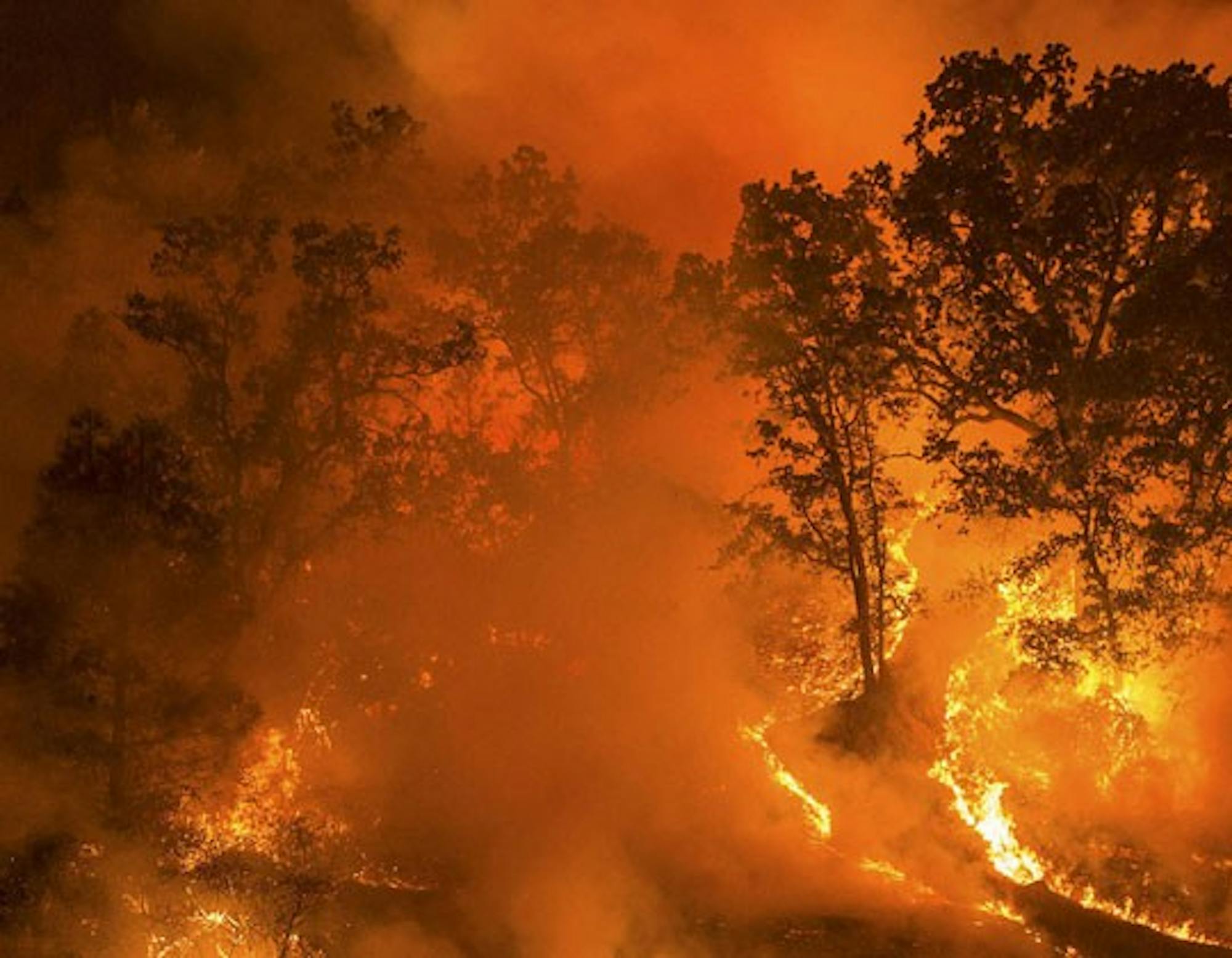Record-breaking wildfires are wreaking havoc in the Pacific Northwest once again, and this summer, smoke has stretched across the U.S., causing hazy conditions in the Northeast. The smoky conditions have contributed to unhealthy air quality and red-tinged skies on campus and around New England.
Fueled by drought and a number of unprecedented heat waves, wildfires in the Western United States and Canada have released enormous amounts of smoke. A plume continues to stretch across the country and has caused unhealthy air conditions from Toronto to Philadelphia.
According to the National Interagency Fire Center, 91 wildfires now rage across the United States and have burned over 1.8 million acres in Oregon, Northern California, Montana and Hawaii. Oregon’s Bootleg Fire is the largest of these blazes at 554,587 acres, and forecasts predict that the fire will not be contained until October. Research from the National Academy of Sciences shows that large wildfires can account for 25% percent of hazardous air pollution in the country, including recent poor air quality in the Upper Valley.
Earth sciences professor Eric Osterberg said this summer’s wildfires come after record-breaking heat and drought due to climate change.
“The entire western part of the United States is in extraordinary drought that we have never seen in recorded history going back hundreds of years,” Osterberg said.
According to Osterberg, wildfires in Canada — including two fires that are each over 400,000 acres — are likely the primary source of smoke visible in the Hanover region. He added that as climate change worsens, widespread smoke events will likely become more common.
“We have good data that wildfires are getting worse,” Osterberg said. “The rest of the country has been dealing with those effects, and this is the first time the east coast has had a little taste of that, and it's something that we might expect to see more of in the future.”
Alex Lawson ’23 said he noticed the effects of distant western fires when both the moon and sun in the Hanover area appeared “redder than normal.”
“I was driving to Boston, [in late July] and the further away the hill was, the more grey it would look — you could see the smoke pretty clearly,” Lawson said.
Initially, Lawson said he thought this phenomenon was the result of a blood moon, which occurs when the moon is in total lunar eclipse. Upon researching further, he found that it was due to traveling particles from wildfires out West.
Lawson added that he noticed a worsening air quality in Hanover — on some days, he said, the forecast showed conditions dangerous for people with asthma.
According to Osterberg, smoke traveling across the country is more diluted by the time it reaches the northeast, making hazy conditions less harmful than at the wildfire’s source.
Gabi Rodriguez ’23, who suffers from asthma, said that it was “noticeably hazy” when she went outside last week.
“I have bad asthma, it gets triggered early by irritants,” Rodriguez said. “I started coughing and had to carry my inhaler around.”
Rodriguez added that she avoided walking at a faster pace and triggering an attack, calling the situation “pretty concerning.”
Wildfire smoke has caused unhealthy air conditions across the country as concentrations of PM 2.5 — air pollution particles less than 2.5 microns in diameter — reached high levels. Wildfire smoke is mostly fine particulate matter, which can lodge deep into the body and elicit an immune response. Bacteria, fungi and heavy metals can also disperse in wildfire smoke.
Smoke can travel across the U.S. in just a few days, and New York, Washington, D.C. and Baltimore issued air quality alerts in response to smoke settling from thousands of miles distant.
Geography and earth sciences professor Justin Mankin said the haze visible from Hanover is propelled by the jet stream, which brings air from east to west across the United States.
The jet stream “is essentially this river of air that moves really fast,” Mankin said. “Any time we are getting hazy conditions over New England due to wildfire smoke out West, it is because of this wind pattern due to the jet stream.”
Mankin said the intensity of wildfires also contributes to the smoke travelling thousands of miles. Hot smoke rapidly rises in the atmosphere at the site of the wildfire, then slowly settles over the ground due to gravity and precipitation.
“This loading of smoke in our atmosphere is a direct indicator of the intensity with which these fires are burning,” Mankin said.





